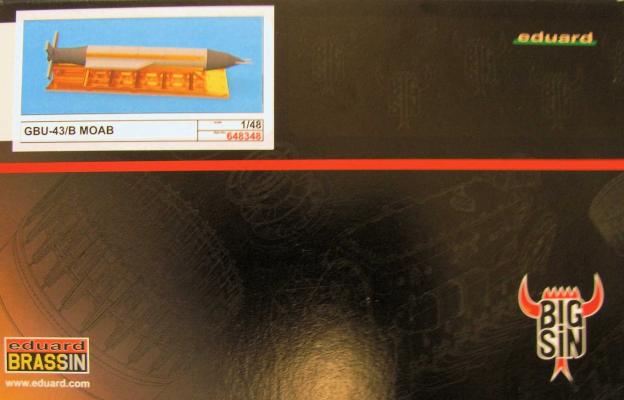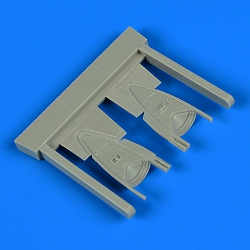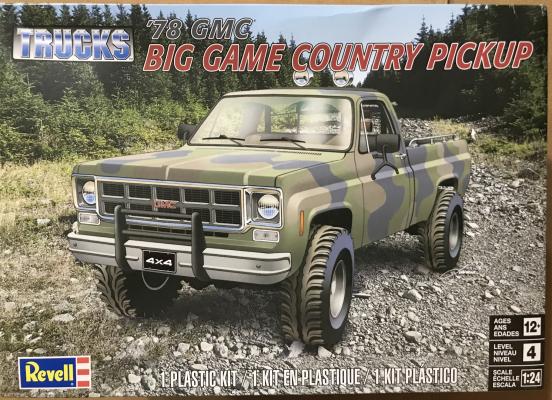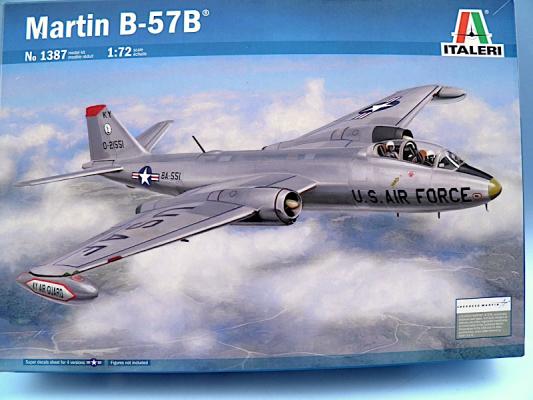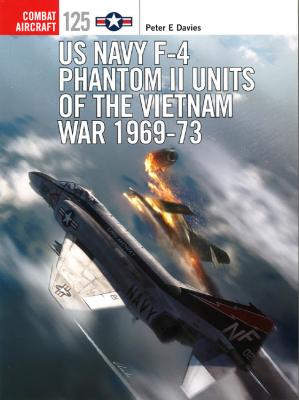The GBU (Guided Bomb Unit)-43/B, MOAB was released by Eduard in 1/72 scale (kit 672160) late last year, and was followed up by this release in 1/48 scale. In U.S. Air Force terminology, MOAB is a Massive Ordnance Air Blast bomb, which is often referred to as the Mother of All Bombs, and for those who build this kit, you will likely refer to it as I do as the Mother of All Brass. The kit looks great built up, but you will want some experience with photoetched brass if you decide to construct one for your collection. I will mention here that it is a good idea to spend some money on your tools from time to time, as I do not know how I would have completed such a project without the Mission Models Etch Mate that I purchased several years ago.
Welcome to the IPMS/USA Reviews site!
Introduction: The primary organization of the IPMS/USA Review website is by IPMS/USA National Contest Class. Within each Class there are sub-menus by kits, decals, books, etc. The Miscellaneous Class is for items that are not class specific or that cross two or more classes.
IPMS/USA Members: We encourage you to submit reviews, both here and to the Journal. To volunteer for membership in the IPMS/USA "Reviewers Corps" and submit your own reviews, please read the Guidelines For Submitting Product Reviews.
Manufacturers, publishers, and other industry members: IPMS/USA is pleased to offer your company the opportunity for product reviews. All product reviews are performed by IPMS/USA members, and are posted in the publicly-accessible section of our website. With very few exceptions, we perform full build reviews of new kit releases, aftermarket products, and supplies. If you would care to provide product samples for review, please contact John Noack, IPMS/USA 1st VP.
To learn more about IPMS/USA, please see our About Us page.
Confession
When I saw this item posted for review I immediately knew I wanted it, and volunteered to prepare the review. Only later after I had clicked the send button for my request did I think about what kit this accessory was meant for? I did some searching and found it was for the Hobbyboss kit. Great! I had the Kittyhawk kit. I immediately sent an email to Phil Peterson confessing my sins, and he responded that I should give it a go anyway.
I went on line to search for the instructions for the Hobbyboss kit and compared what I found to the parts for the Kittyhawk kit. On-screen and on paper things looked like they just might work. The parts breakdown between the two kits were very similar, except the parachute container on the Hobbyboss kit is molded integral with the vertical stabilizer. Now, I needed to wait for the parts to arrive for a real comparison and a chance for vindication.
This kit is a modified re-release of the Monogram GMC High Roller kit from 1981 (the parts have a 1978 copyright on them) with differences being different decals and the “Ground Hawg” sidewall markings are missing from the tires.
Kit
The kit comes packaged in the usual Revell 1/24/25 size cardboard box with 5 bags of white, clear, and chrome molded parts as well as the rubber tires. The tires were floating around in my box, as the bag they were in doesn’t look like it was sealed all the way. The clear parts are bagged separately. There is a total of 5 sprues of white plastic plus the separate cab, 1 sprue of chrome, 1 sprue of clear, and the 4 rubber tires. All this adds up to a total of 92 plastic parts. The parts are molded with good detail and some flash. There are some ejector pin marks that will need to be addressed. I am hoping my kit was a one-off as some of the ejector pin marks were extremely deep, almost all the way through the part.
The British developed the Canberra as a replacement for the Mosquito. The plane was so successful that the US purchased the license to build it to fit their needs. After some cockpit modifications along with a few others, the B-57B was born.
I have a personal relationship with this plane in that my Dad worked on the Electronic Countermeasures version at both Westover AFB and Malmstrom AFB so I got to see a lot of these flying around and have loved the plane ever since.
Peter E. Davies lives in Bristol, U.K. and as authored or co-authored at least twenty-seven books on modern American combat aircraft, many with Osprey Publishing. He was published by the Naval Institute Press in 1997 with his hardcover book, The Harrier Story, co-authored with Anthony M. Thornborough. His Schiffer Military History hard cover on the Gray Ghosts, U.S. Navy and Marine Corps F-4 Phantoms published in 2000 is considered a must have. Peter published a hardcover book with Crowood Press, North American F-100 Suber Sabre, in 2003. He has also covered many aircraft in Osprey’s Combat Aircraft series, Osprey’s Air Vanguard series, and Osprey’s Duel series. Four of these have concentrated on the U.S. Navy's use of the F-4 Phantom II. All of Peter's books on this topic have contained extensive input from interviews with more than 100 former US Navy Phantom II aircrew, maintainers and mission planners











